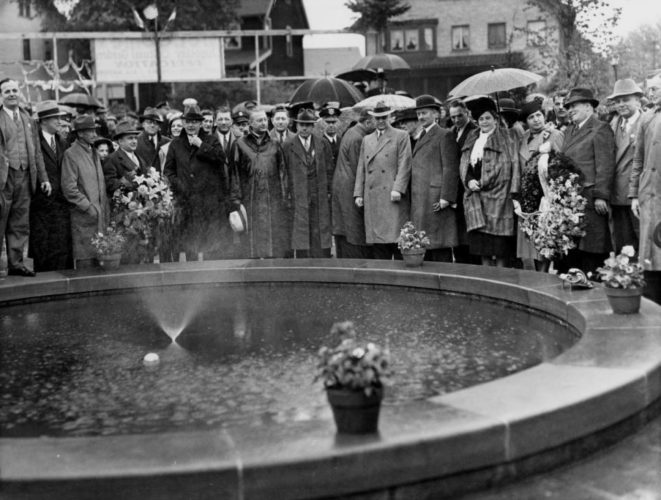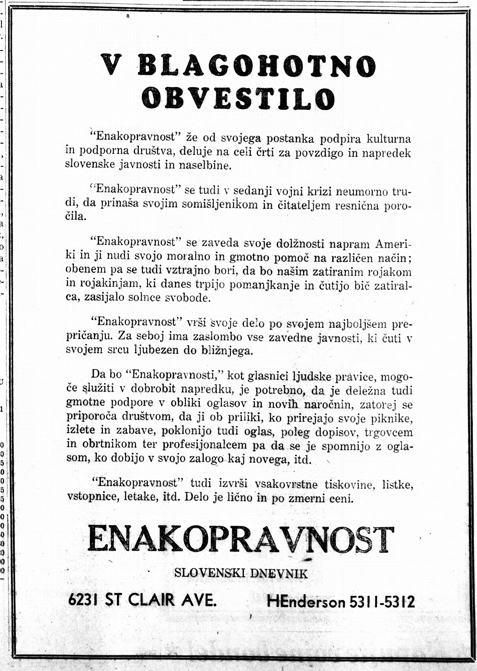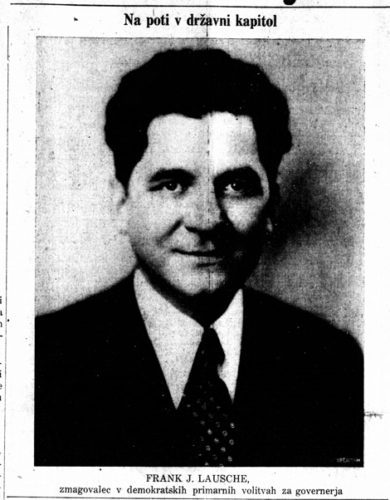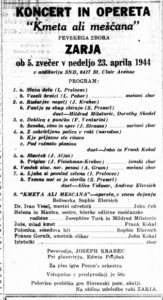Slovenian Newspaper Now on Chronicling America!

From the early 1900s through the 1990s, Cleveland was home to the largest Slovenian settlement in the United States. Immigrants from Slovenia began arriving in the city in 1882, with increased immigration during the periods of 1890-1914, 1919-1924 and 1949-1960. The first wave coincided with Cleveland’s growing need for industrial workers and immigrants seeking opportunities for economic improvement. By 1910, about 20,000 Slovenes were living in Cleveland, and by 1920, this had increased to nearly 25,000. The second and third waves followed both World Wars, which had left Slovenian lands (then part of Yugoslavia) in political and economic turmoil.

Most Slovenian immigrants settled into neighborhoods on Cleveland’s east side near steel mills, in the St. Clair area, Newburgh, Collinwood and Euclid. Desiring to do business in their own language, early entrepreneurs such as Jožef Turk, Cleveland’s first permanent Slovenian resident, used their saved wages to establish grocery stores, boardinghouses, saloons, restaurants, general stores and other enterprises. Capital from these businesses was often invested into community organizations such as fraternal benefit societies and national homes, which were centers for social and cultural life. As many Slovenians were Roman Catholic, several parishes were formed, including St. Vitus, St. Lawrence and St. Mary, providing spiritual guidance and education. Cleveland is also home to the Slovene Home for the Aged, the second nursing home built specifically to serve elderly Slovenian-Americans.
As did other immigrant groups, Slovenians founded their own newspapers to help communicate local, state, national and international news in their own language. These publications also provided political opinion, practical advice for new immigrants and general interest articles covering a variety of topics. As part of our ongoing effort to digitize foreign language newspapers for Chronicling America, we are pleased to share that the following newspaper is now freely available and full-text searchable (in Slovenian):
Enakopravnost (“Equality”) was established in 1899 as the first Slovenian daily newspaper in Cleveland. It was liberal, free-thinking, and labor-oriented–a direct rival to the conservative and Catholic-oriented Ameriška Domovina (“American Home”) which had been established in 1899. Among its pages was coverage of union activities, anti-fascist sentiment leading up to World War II, and support for Yugoslavia’s Communist regime after the war. Starting in the 1930s, a weekly English section reported on local events, places and people. Its publishers and editors were active in the Slovenian- and Yugoslavian-American communities and included Vatroslav J. Grill, who eventually became national president of the Slovenian Progressive Benefit Society.

Ohio’s Slovenians have contributed much to the history of our state and nation. In politics, Frank J. Lausche, son of two Slovenian immigrants, served as Cleveland’s mayor (1942-1944), Ohio’s governor (1945-1947 and 1949-1957) and U.S. Senator (1957-1969). George Voinovich, who also served terms as Cleveland’s mayor (1980-1989), Ohio’s governor (1991-1998) and U.S. Senator (1999-2011), among other offices, is Slovenian on his mother’s side. Several singing and dramatic groups were nationally-renowned and enjoyed decades of success, such as Zarja, Jadran, Glasbena Matica, Ivan Cankar Dramatic Society and Lilija Dramatic Society, and Cleveland-raised Frank Yankovic, also called the “Polka King,” won a Grammy for his Slovenian-style polka recordings. Ohio football stars Randy Gradishar, Tony Adamle and Mike Adamle also have Slovenian heritage.

Explore the history of this immigrant community in their own words through newspapers digitized for Chronicling Americaand numerous hardcopy and microfilm editions of newspapers held by cultural heritage institutions across the country. For tips on translating this content into English, check out our “Using Online Translation Tools” YouTube video.
Further reading:
- Identity, Conflict, and Cooperation: Central Europeans in Cleveland, 1850-1930, edited by David C. Hammack, Diane L. Grabowski and John J. Grabowski (2002)
- “Slovenes” by Rudolph M. Susel in Encyclopedia of Cleveland History edited by John J. Grabowski (2017)
Thanks to Jenni Salamon, Coordinator for the Ohio Digital Newspaper Program, for this week’s post!
Chronicling America is the collaborative project of theNational Endowment for the Humanities,Library of Congressand state partners, like the Ohio History Connection, to preserve and provide increased access to America’s historic newspapers through theNational Digital Newspaper Program. By the end of 2018, the Ohio History Connection will have contributed over 400,000 pages of Ohio’s historic newspapers, including over 100,000 of foreign language content. For more information, visit theNational Digital Newspaper Program in Ohio Project Website.



Leave a Reply
You must be logged in to post a comment.